
Susie Challen and Marc Beney were both instantly seduced by the garden of this beautiful Victorian villa in a rural area near Rochester in Kent when they discovered it in 2011.
More from Period Living
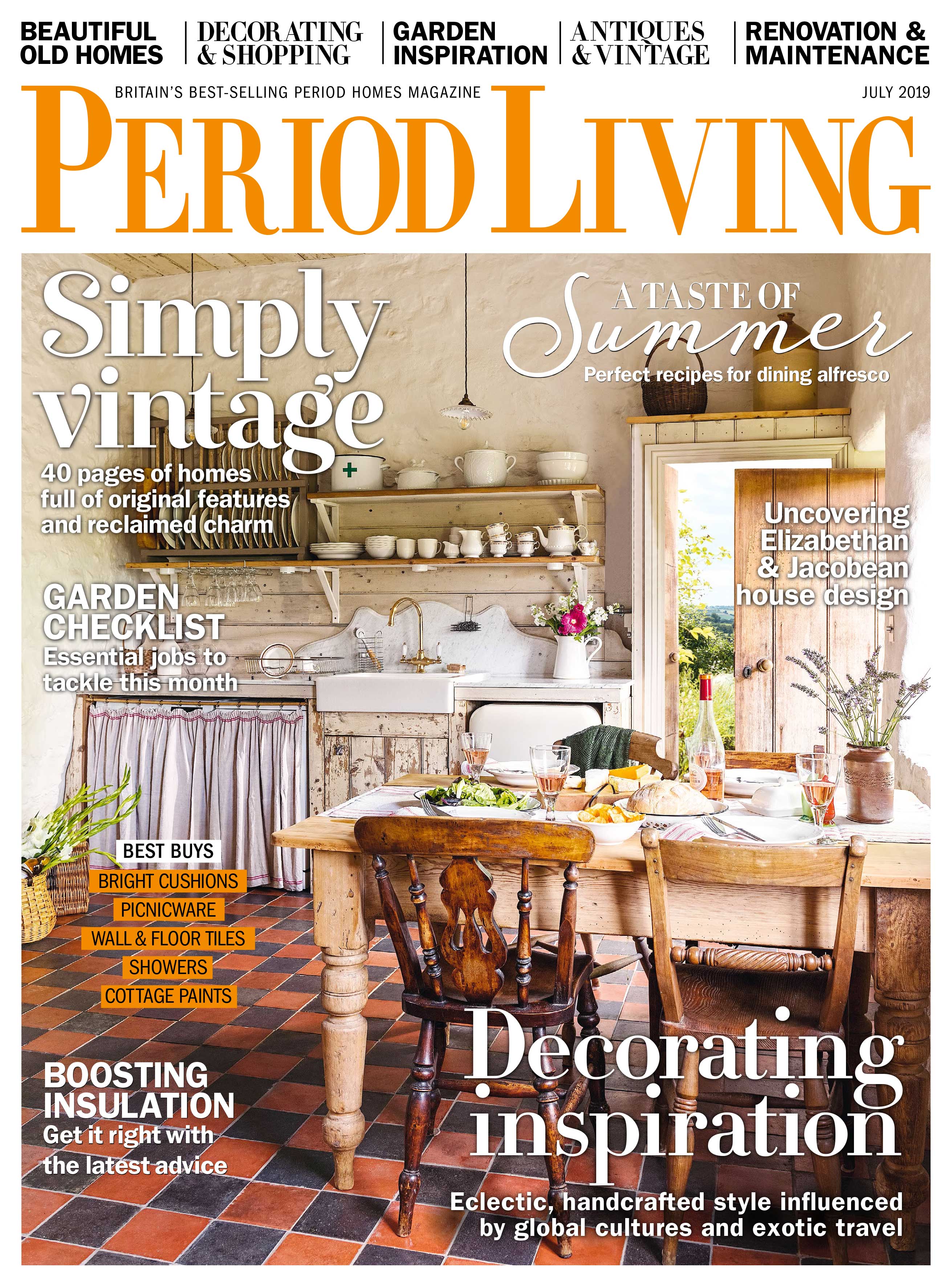
Get the best period home inspiration, ideas and advice straight to your door every month with a subscription to Period Living magazine
Back then, it was a much different picture from the carefully tended beds and borders it presents today.
With many areas left to grow wild for years, the garden was a jumble of romantic overgrowth. Ivy scrambled across lawns, a large dead oak dominated the south-west skyline, misshapen yews blocked views, and the garden was dotted with a mix of self-sown trees. But Susie and Marc could spot its potential.
There were wonderful original features remaining, too. These included mature specimen trees, meandering paths and steps, varied aspects, and romantically tumbledown Victorian vine and soft fruit houses glimpsed out of the thicket.
‘We were told that the garden was magnificent post war, but it had largely returned to nature when we arrived,’ explains Susie. ‘We have worked unaided to clear and rediscover it, without any plan or pictures from before.’
Read on to find out how they breathed new life into the garden, then find more gardening advice and inspiration.
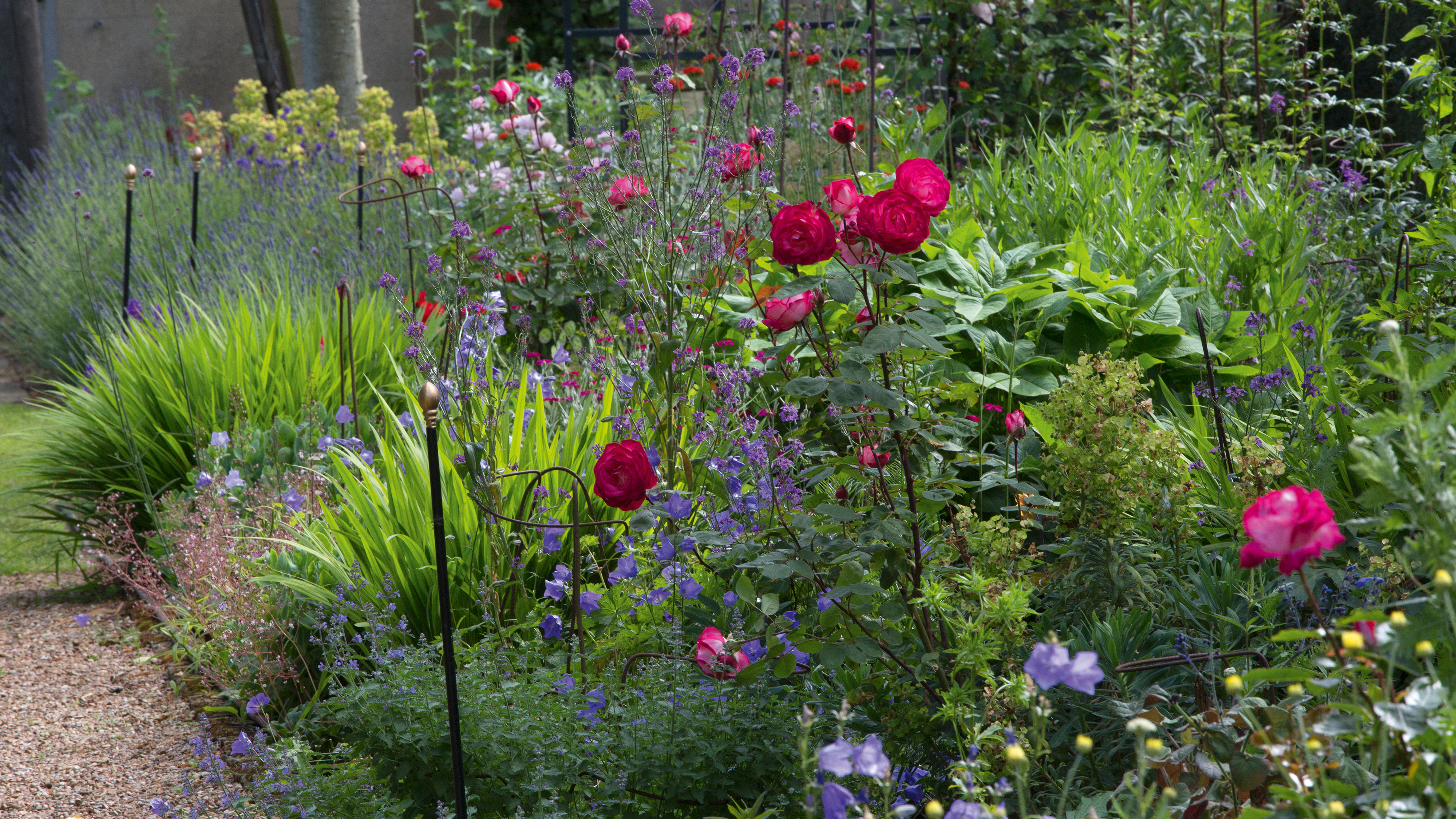
The colourful herbaceous border billows with a mix of roses aquilegia, verbena, campanula, and candy pink Lychnis coronaria
‘We have since learned what effort is involved to realise even a part of the garden’s potential, but we are continuously rewarded by seeing our plans come to fruition as the seasons pass,’ says Marc.
Wrapping around the house, the sloping, terraced plot is separated into areas, each with its own micro-climate, use and aspect. These include a walled kitchen garden, an old grass tennis court now with a double spiral mown labyrinth, and a yellow and a white garden next to a Victorian pavilion and croquet lawn.
If you're inspired by their garden transformation, find advice on how plan, design and cost your own garden's transformation.
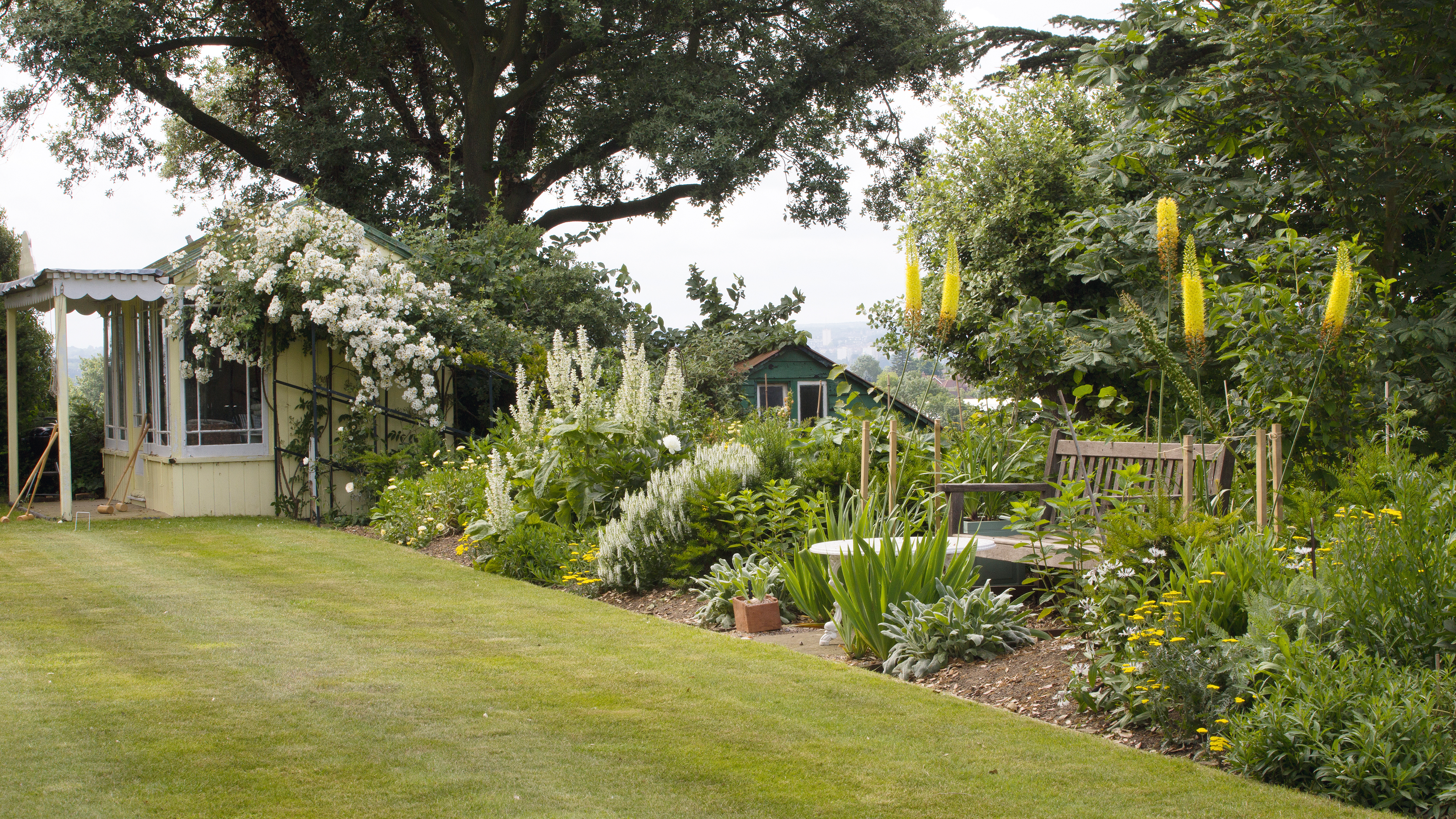
The yellow and white themed bed by the croquet lawn and Victorian pavilion features towering spires of pale lemon Eremurus 'Charleston', sulpher achillea, spikes of salvia, double white 'Duchesse de Nemours' peonies, with foils of silvery stachys
‘We have gradually opened up the garden – which was partially inaccessible and dark with evergreens – to the light, clearing a lot of dominant monoculture and adding variety and productivity, always wanting to try new ideas,’ says Marc.
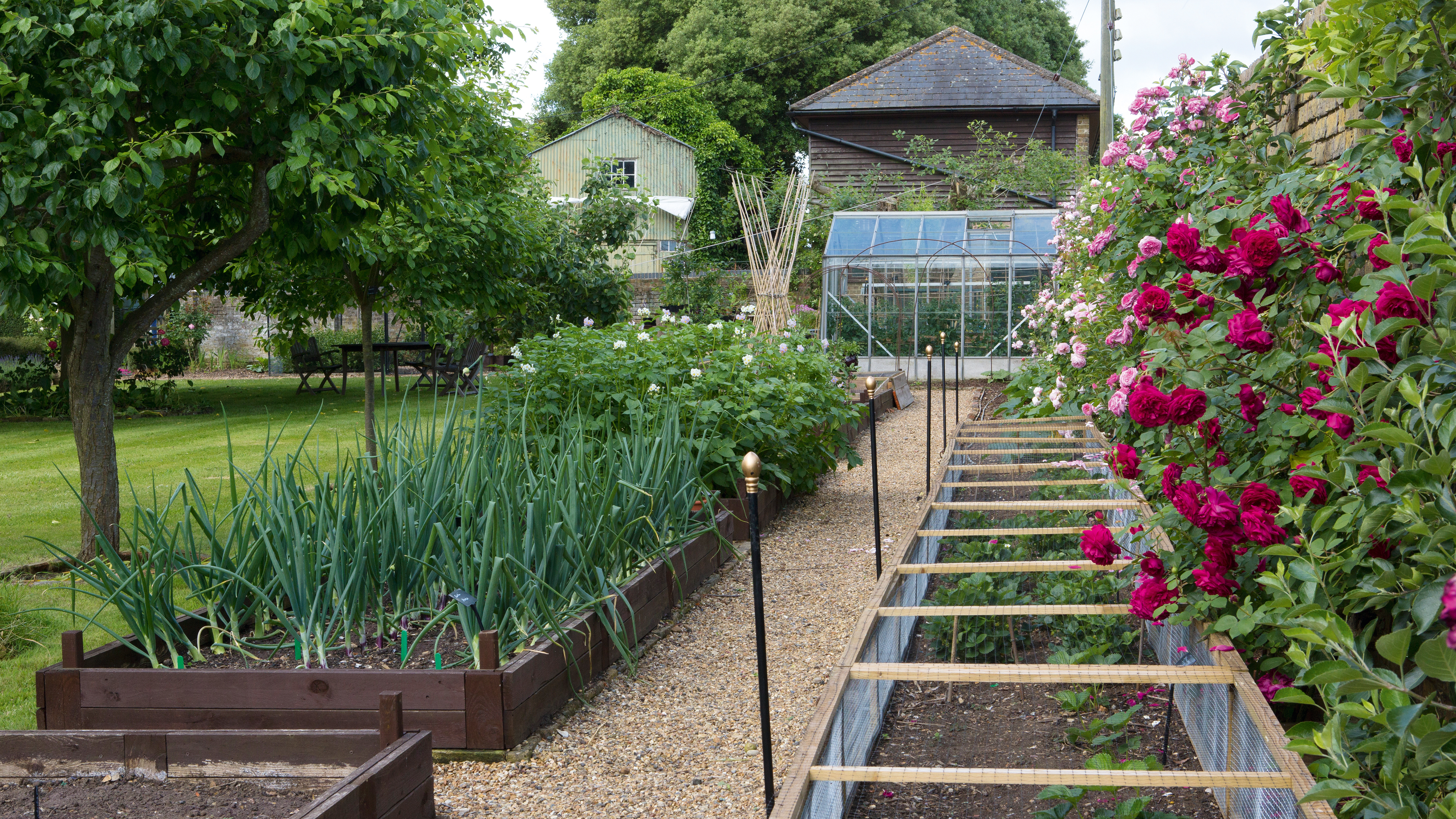
Scented roses in tones of crimson, pink and cream smother a wall in the kitchen garden beside a raised bed of produce
This is the largest garden the couple has tackled, but with a shared interest in plants their knowledge has accelerated through hands-on experience of digging, clearing, planning and planting.
It was not easy for them to establish what lay underneath the overgrown areas until each was cleared, so the garden has evolved in a piecemeal fashion with no overall plan.
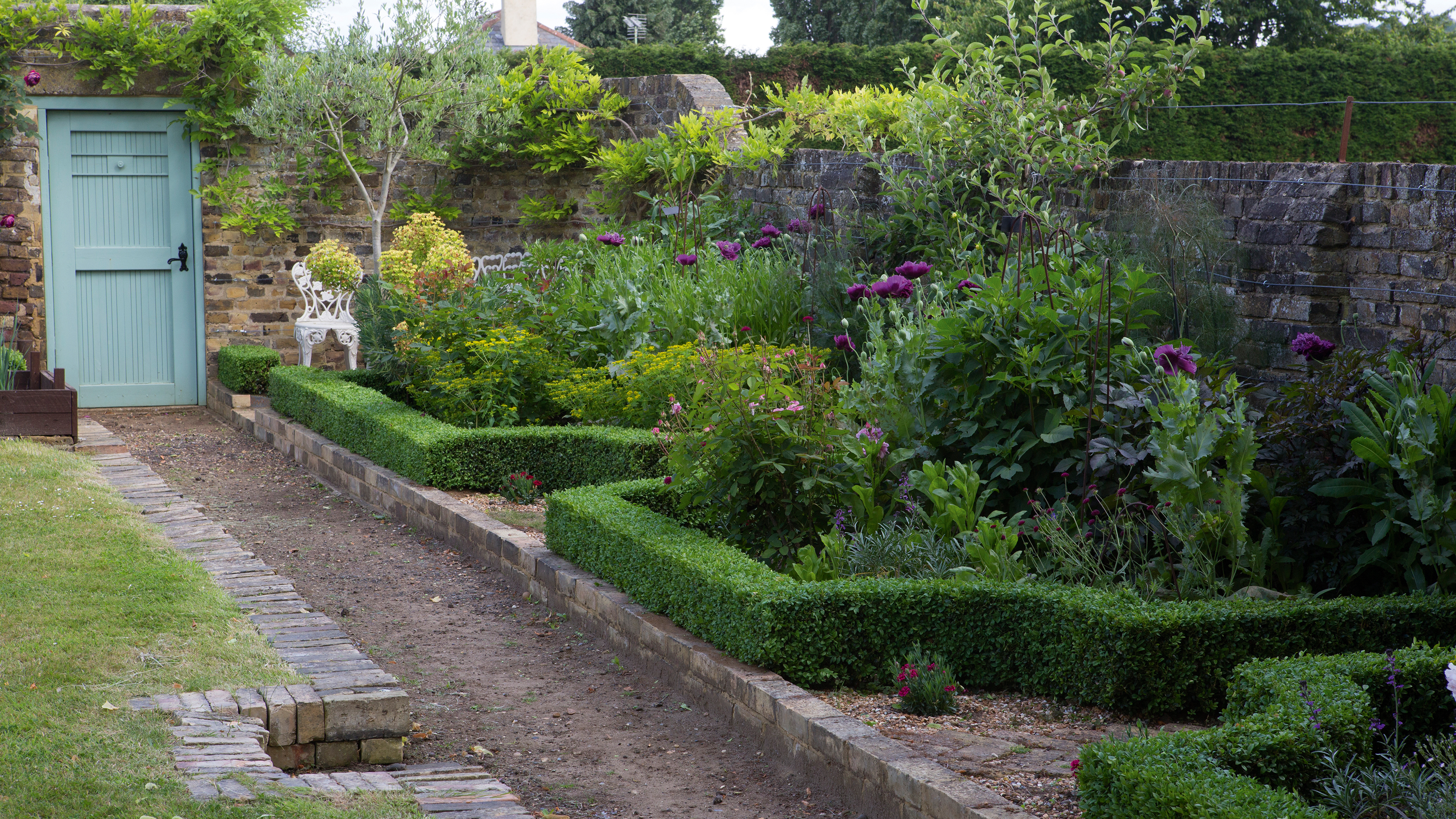
A little seating area in a corner of the walled garden is framed by neatly clipped hedging infilled with euphorbia and poppies
Their initial focus was to re-establish the kitchen garden, all of which remained were two overgrown Victoria plum trees, a glorious walnut tree, a lidless cold frame and a greenhouse that had seen better days.
Today, a mix of climbing roses adorn the walls, blending from pinks to the dark burgundy Rosa ‘Falstaff’.
The fruit harvest offers a wide range, from Mespilus germanica ‘Nottingham’ (medlar) and Morus nigra ‘Chelsea’ (mulberry), to pears, plums and apples, while a four-bed rotation vegetable system supplies produce through the year.
Susie and Marc’s aim is not to be self-sufficient, but rather nurture crops they love and which may be hard to find in the shops, all grown in as natural a way as possible.
Find more advice on how to create your own kitchen garden.
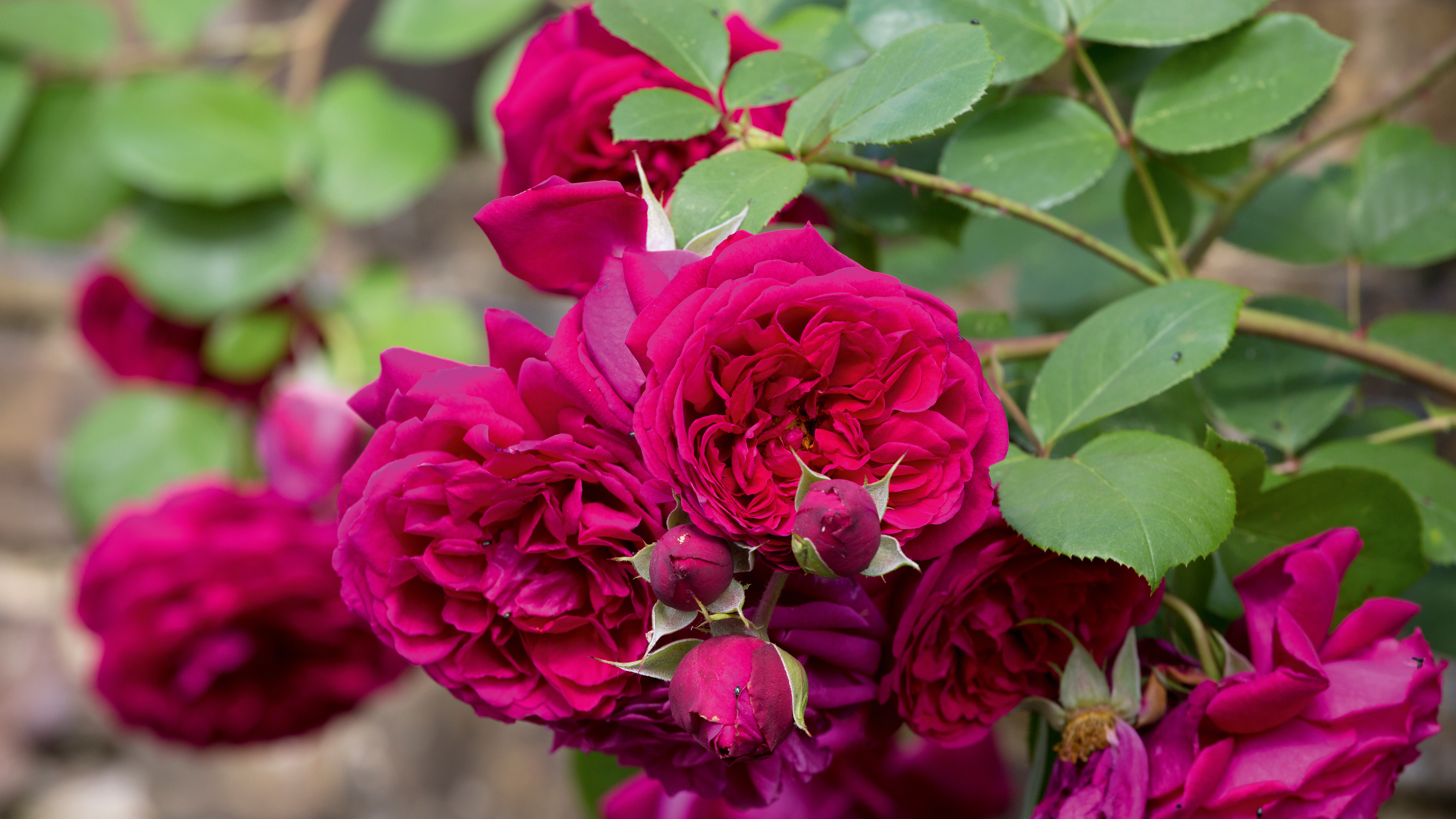
Rosa 'Falstaff'
Now known as the yellow and white garden, the area to the south-west of the house has been cleared, levelled and a hand-sown lawn created for the enjoyment of croquet.
It is bordered by a romantic, billowing mix of yellow and white flowers, including foxtail lilies, Achillea ‘Moonshine’ and Salvia sclarea ‘Vatican White’, framed by low box hedging.
Find more planting inspiration from our guide to choosing a colour scheme for your garden.
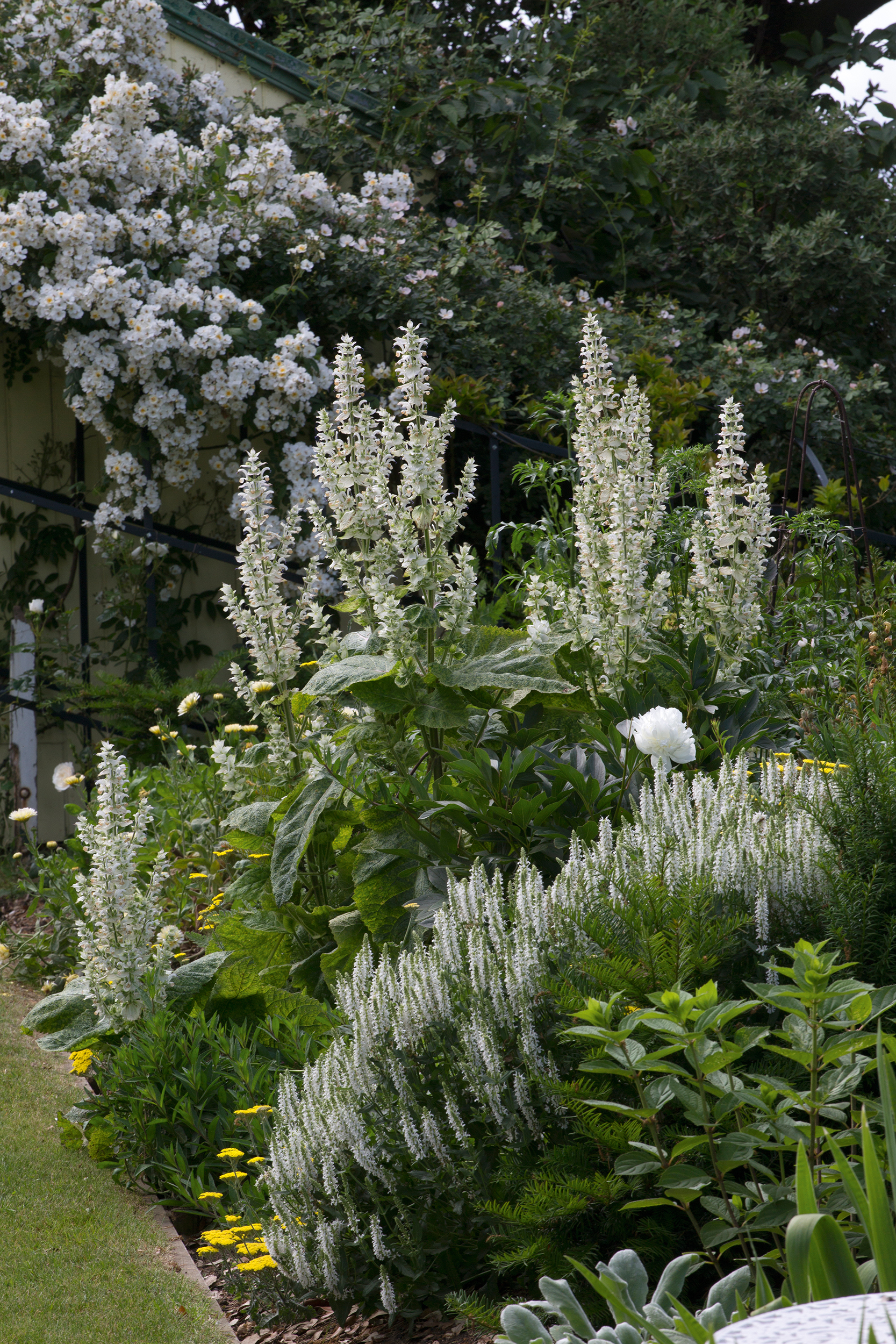
A border in the yellow and white garden
Across the garden, the palette is considered, with the aim for year-round interest; winter aconites, snowdrops and crocuses, through roses and perennials, to flamboyant dahlias, asters, winter jasmine and holly berries.

In the kitchen garden, Lavandula angustifolia 'Imperial Gem' edges one side of the path, with a colourful herbaceous border
‘Colour combinations are important, so there are gradual transformations, such as in the kitchen garden where colours move from light and pale to strong and dark, or the emphasis on strong colours at the front of the house,’ explains Susie.
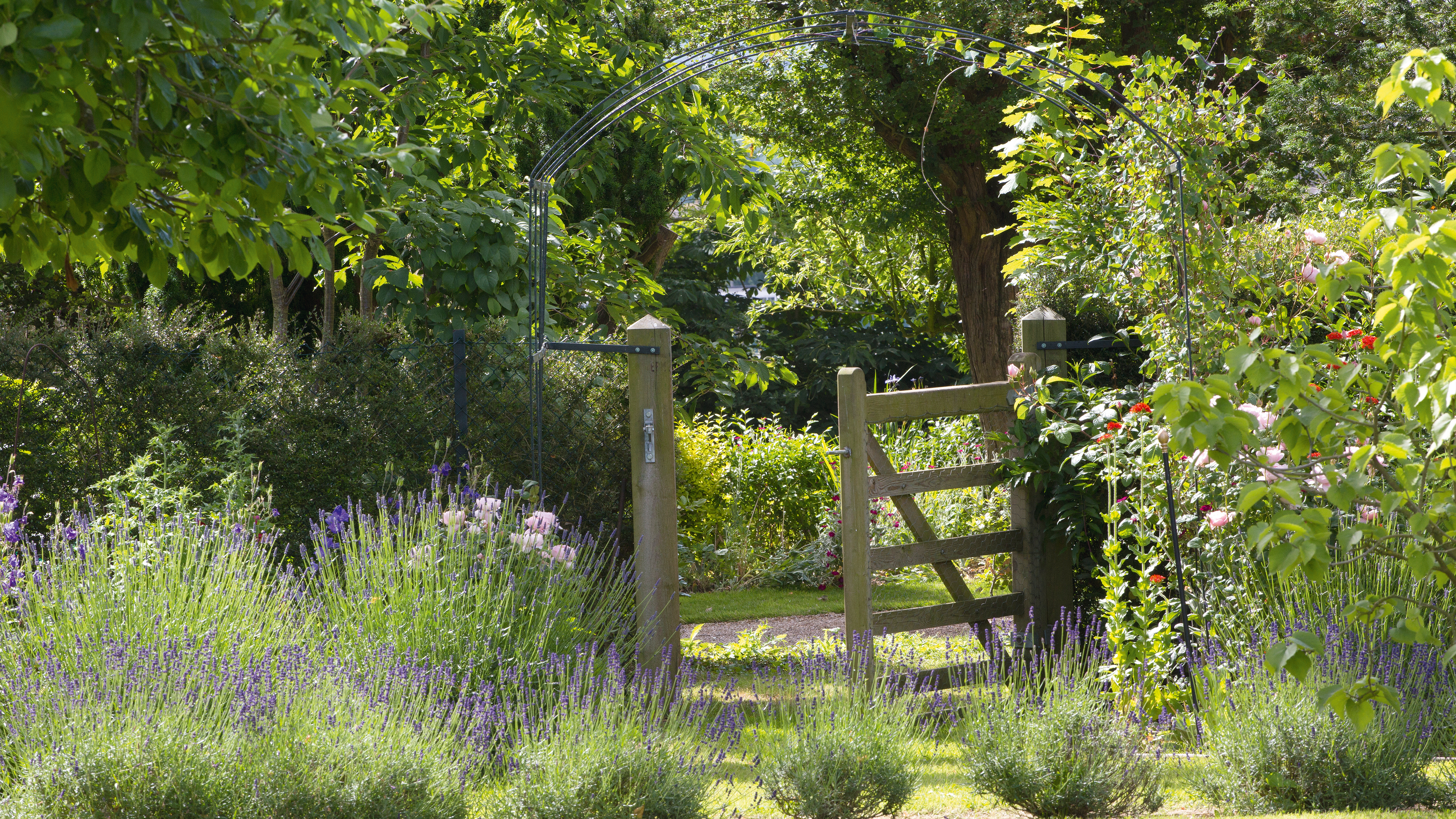
Tufts of lavender caught in the dappled sunlight by a gate add to the sense of division between areas of the garden
It’s both cost saving and rewarding to grow new plants from seed for infilling beds and borders. 'We buy a few new packets each year to try out; we also let some plants, such as foxgloves and aquilegias, go to seed and self-sow – although you may need to thin them out as they can take over,' says Susie.
‘When the sun is shining, it feels a wonderful thing to be working in a garden,’ says Marc. ‘We benefit both from looking at the surrounding landscape and the efforts and inspiration of our predecessors.’
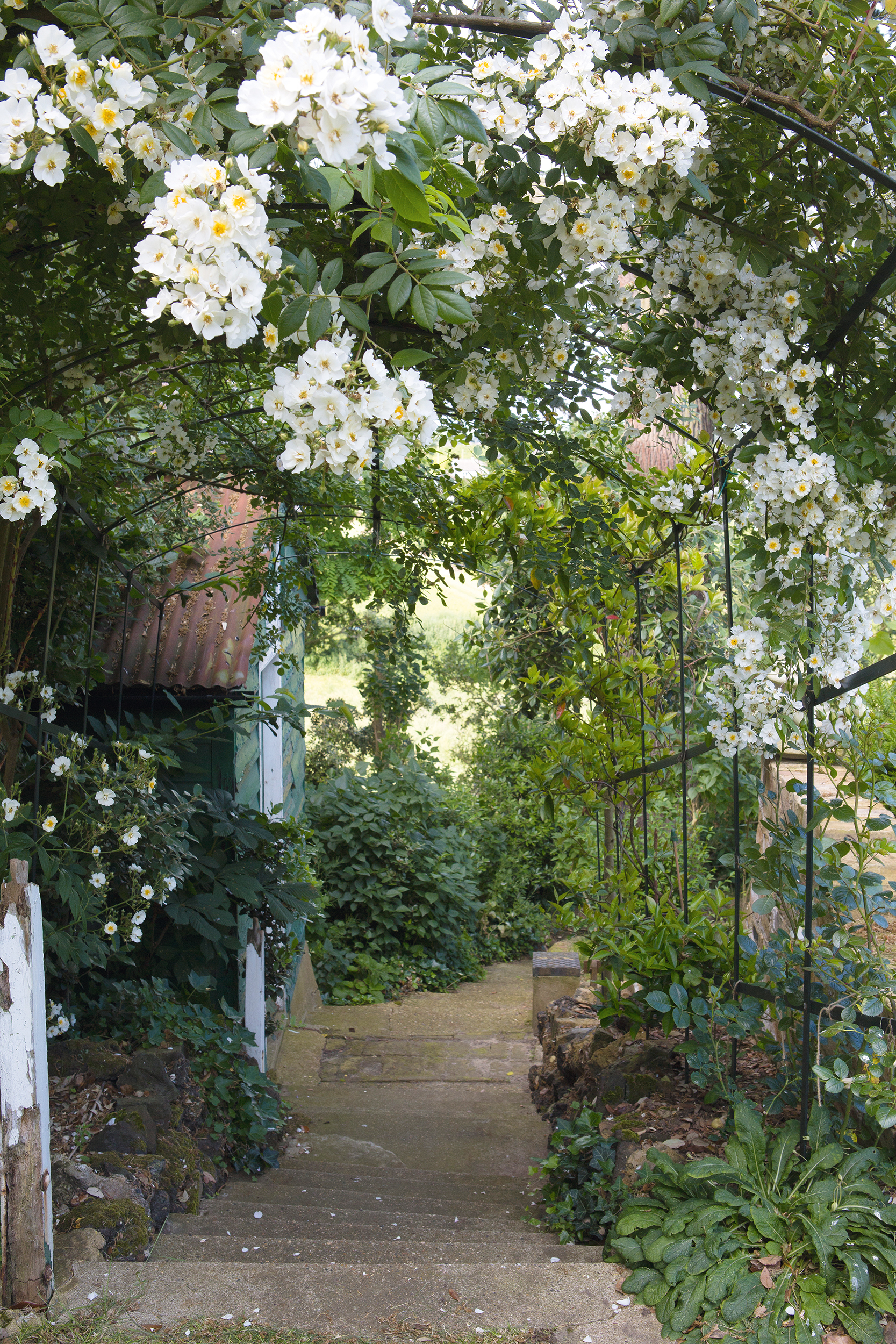
'Rambling Rector' rose drapes over a frame leading down to the lower end of the garden
More garden inspiration
Join our newsletter
Get small space home decor ideas, celeb inspiration, DIY tips and more, straight to your inbox!
-
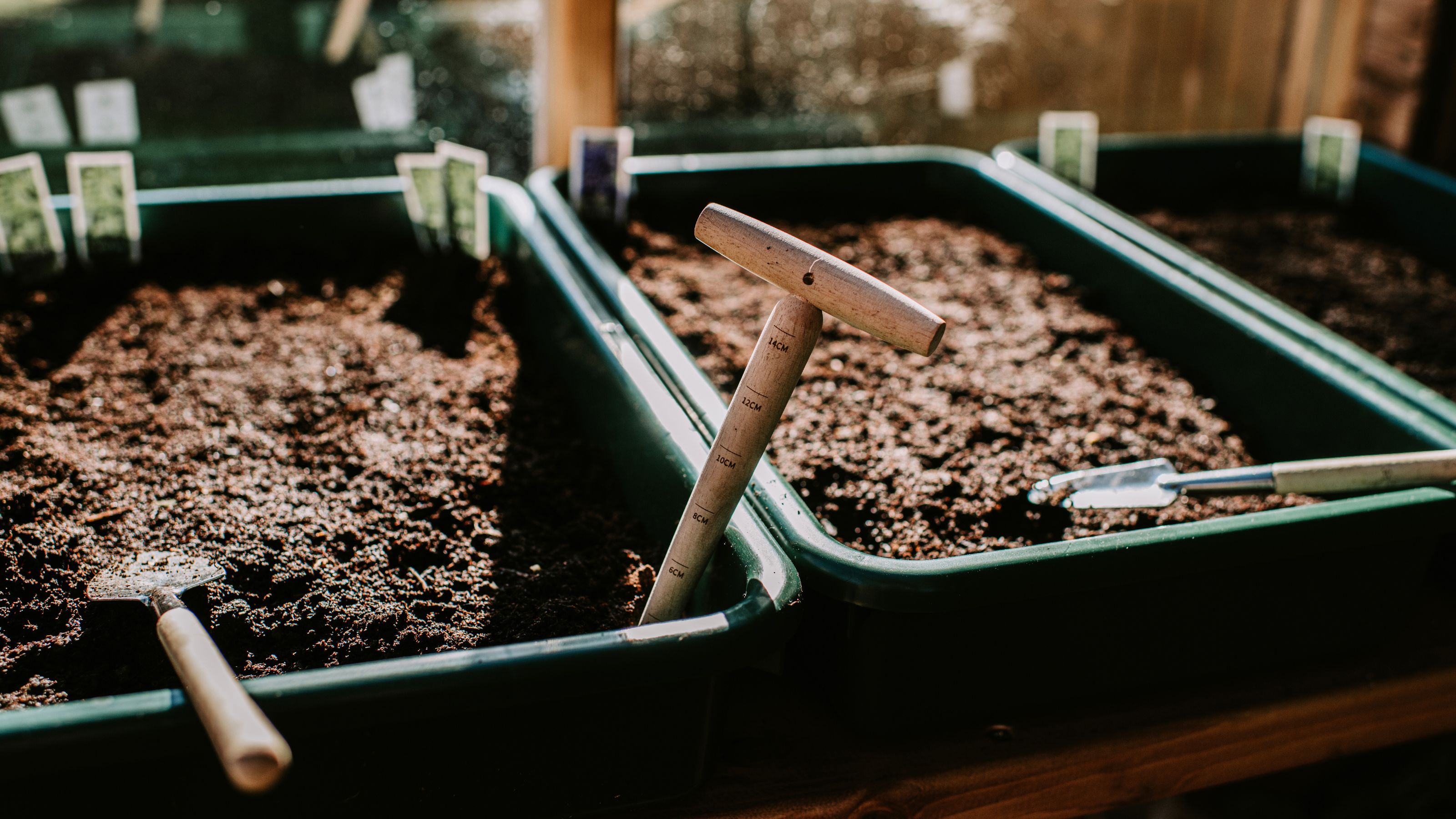 How to make compost — 8 easy steps gardening pros always use
How to make compost — 8 easy steps gardening pros always useLearn how to make compost at home in seven easy steps, whether you have a bin or want to create a compost heap. We've asked pros for their top tips
By Eve Smallman
-
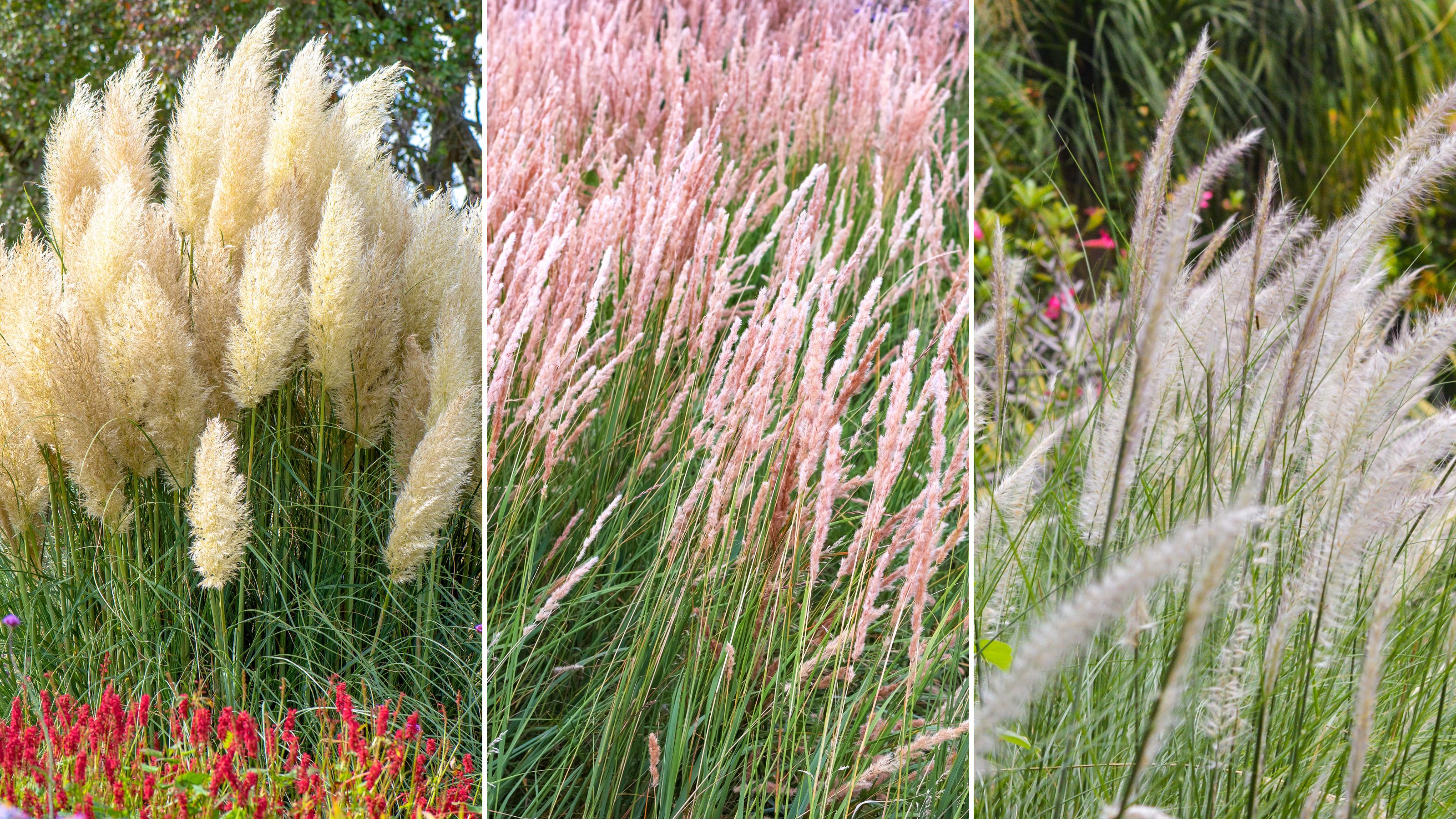 Planting ornamental grasses — the best types experts love and how to grow them
Planting ornamental grasses — the best types experts love and how to grow themWe've got you covered on planting ornamental grasses, speaking to experts about what ones to grow, how to grow them, and factors to consider
By Eve Smallman
-
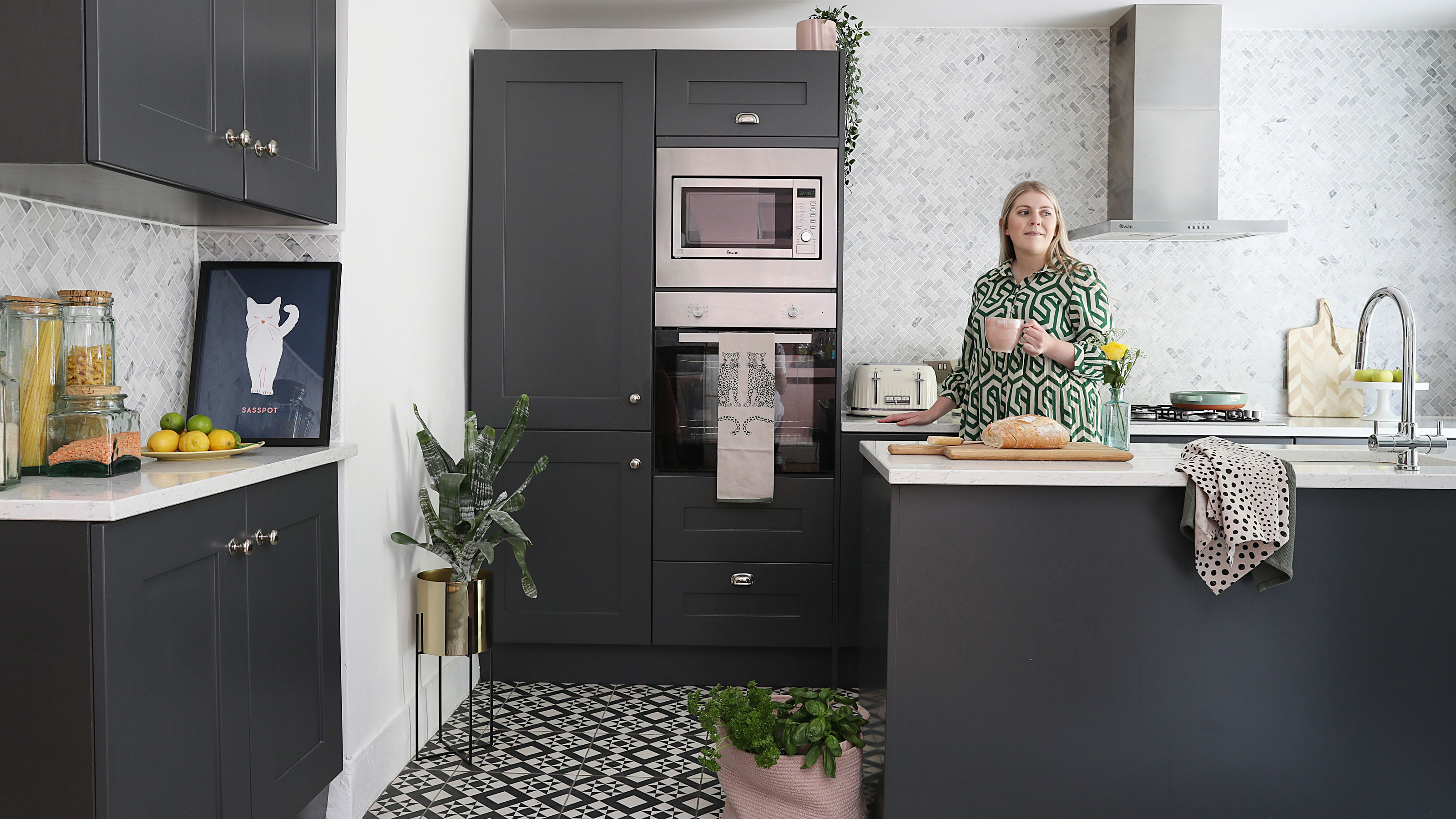 "Grotty" terrace is transformed with French flair and Ibiza vibes in the garden
"Grotty" terrace is transformed with French flair and Ibiza vibes in the gardenEsther Pillans' tired-looking Victorian terraced house was given a makeover with a touch of Parisian chic
By Ellen Finch
-
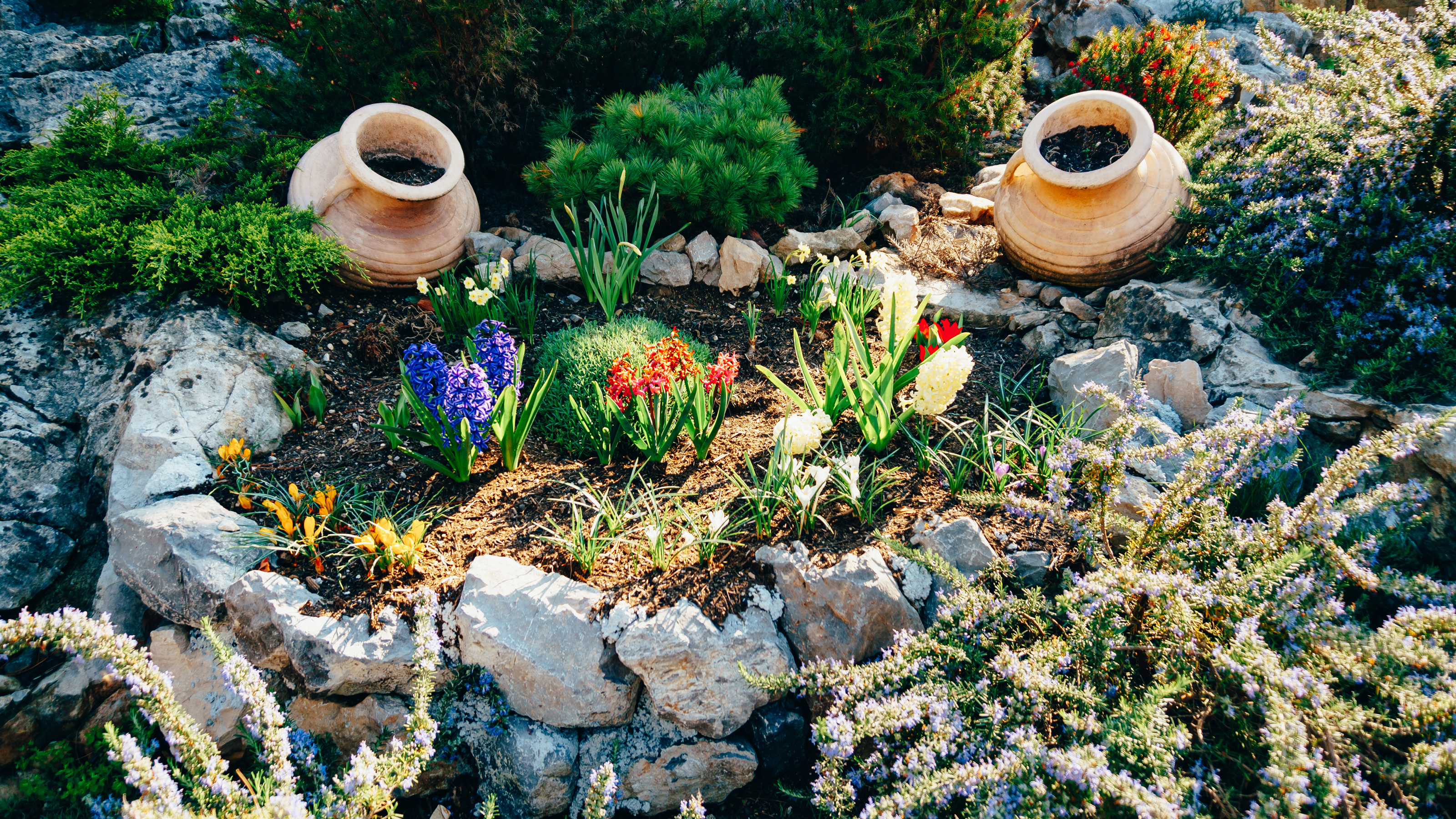 Rock garden ideas – 10 DIY ways to create a rockery
Rock garden ideas – 10 DIY ways to create a rockeryThese rock garden ideas are suitable for outdoor spaces big and small. Create your own rockery on a lawn or even on a balcony with just a few materials.
By Anna Cottrell
-
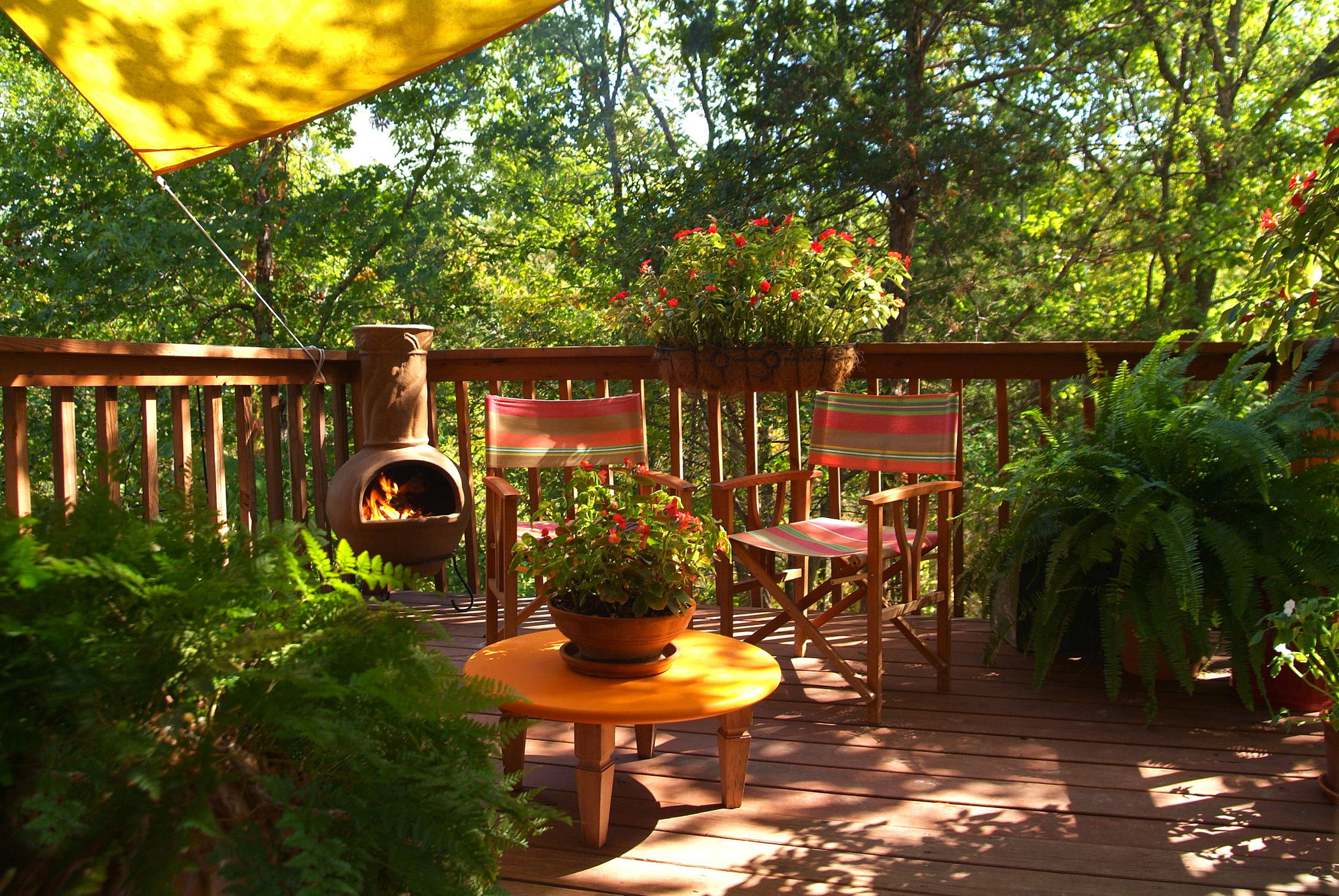 Cabin fever? These chimineas will extend the life of your patio
Cabin fever? These chimineas will extend the life of your patioThis cold-weather season, cozy up to our favorite chimineas!
By Brittany Romano
-
 5 outdoor summer essentials to prove Society6 is your one-stop-shop this season
5 outdoor summer essentials to prove Society6 is your one-stop-shop this seasonCheck off all of your outdoor summer essentials by shopping exclusively at Society6.
By Brittany Romano
-
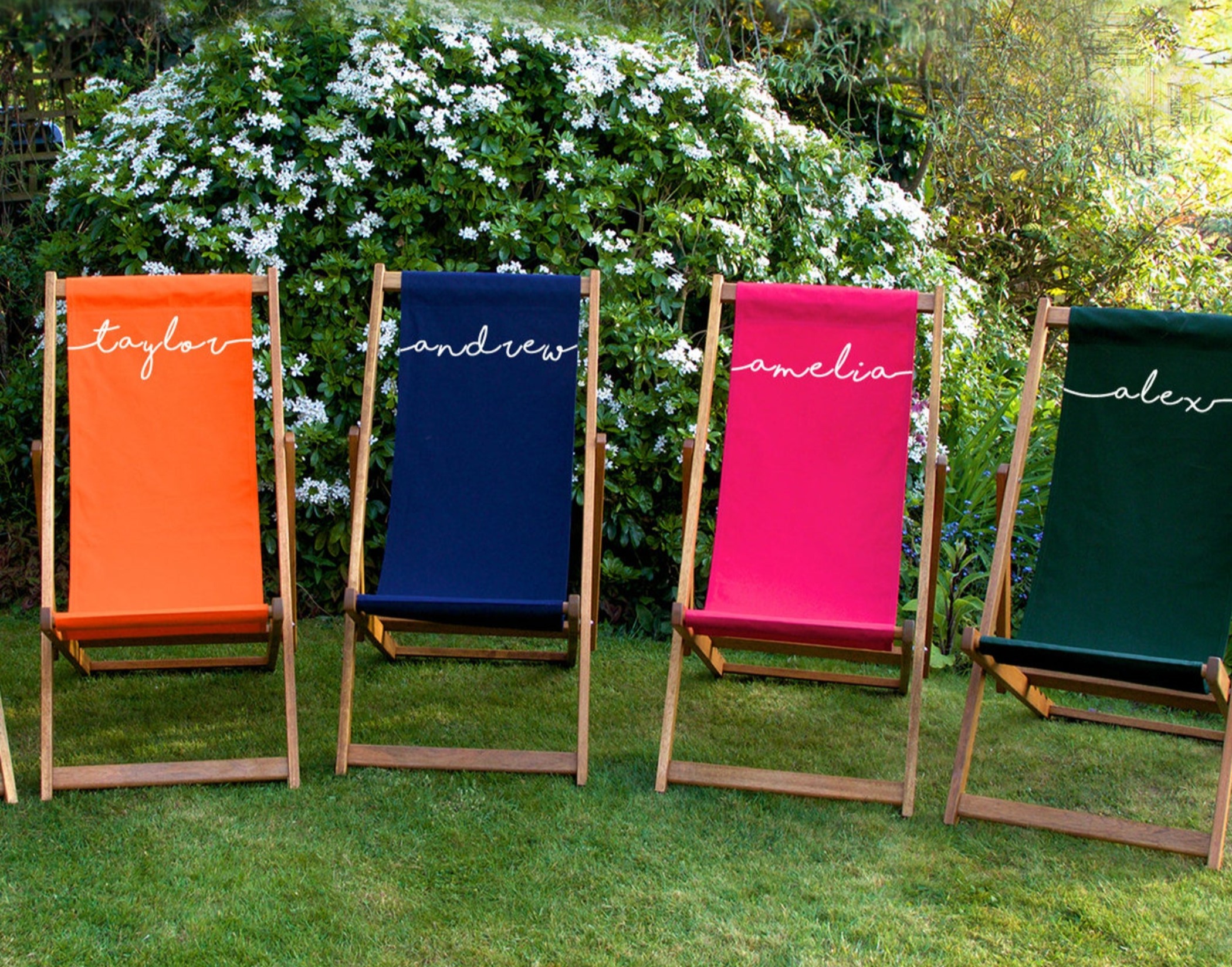 The first-ever Etsy outdoor sale is happening now, and we're buying these 5 items
The first-ever Etsy outdoor sale is happening now, and we're buying these 5 itemsFor a limited time, this Etsy outdoor sale will give your backyard the facelift it needs — at a fraction of the cost.
By Brittany Romano
-
 The benefits of houseplants – 8 feel-good ways plants help your health
The benefits of houseplants – 8 feel-good ways plants help your healthEnjoy the many benefits of houseplants. Air-purifying, anxiety-soothing, mood boosting and more positive vibes.
By Camille Dubuis-Welch